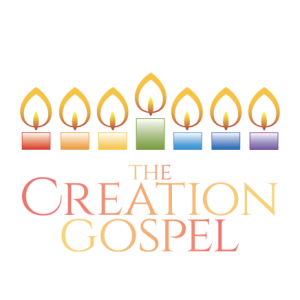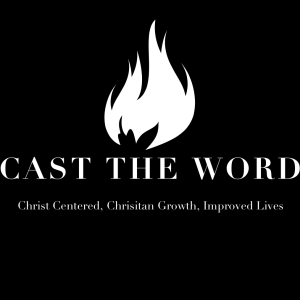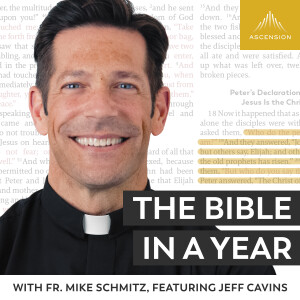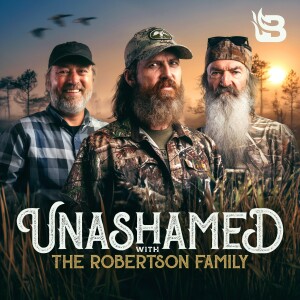

Dr Hollisa Alewine – Footsteps of Messiah Part 124 (Rise Up Come Down Jerusalem- Part 2 of Charm School) for week of September 8, 2024
The haftarah (reading from the Prophets) supplies our study this week, a continuation from "Charm School" of the Torah portion Vaetchanan. It is Isaiah 51:12-52:12. Verses and 1 and 2 supply our question and answer:
Does Jerusalem, the Bride, arise at the resurrection or does she descend to be seated (dwell)?
YES!
First one, then the other.
The foreshadowing of the restoration is found a little farther along in Isaiah:
- It will no longer be said to you, “Forsaken,” nor to your land will it any longer be said, “Desolate”; but you will be called, “My delight is in her,” and your land, “Married”; for the LORD delights in you, and to Him your land will be married. (Is 62:4)
This explains the “New Jerusalem” as Eden above able to once again “marry” the physical Land of Jerusalem and Israel from which she withdrew after the first sin. Once the Land is cleansed, those who could heed the command to “Arise” at the resurrection at the Last Trump will descend adorned with the ornaments of the written and lived Word, and they will be seated, or “dwell” (sheviyah) in the Bride’s renewed intimate Edenic habitation:
- Then I saw a new [renewed] heaven and a new [renewed] earth; for the first heaven and the first earth passed away, and there is no longer any sea. And I saw the holy city, new Jerusalem, coming down out of heaven from God, made ready as a bride adorned for her husband. And I heard a loud voice from the throne, saying, “Behold, the tabernacle of God is among men, and He will dwell among them, and they shall be His people, and God Himself will be among them, and He will wipe away every tear from their eyes; and there will no longer be any death; there will no longer be any mourning, or crying, or pain; the first things have passed away.” (Re 21:1-4)
Not all who were called will be fully clothed in the garments that allow them to pass into and out of the ”cloud” of New Jerusalem as they minister to the nations and kingdoms of the millennium. Although all were educated by Moses and the Ruach in the cloud in the wilderness, not all obeyed His compassionate mitzvot with joy, and they died either in the wilderness of the exodus from Egypt or the wilderness of the peoples in the last exile (Ezek 20:35). The Cloud expels rebels and practicing sinners. They evaporate in the Light of the Word, not the cloud.
Nehemiah explains their royal priestly semi-Edenic journey, reiterating the special garments in a cloud dwelling where the Lamp was the Lamb, the Word of God, and how they ruled and will again rule the peoples from this portable Jerusalem/Temple. (Re 21)
- “You, in Your great compassion did not forsake them in the wilderness; the pillar of cloud did not leave them by day, to guide them on their way, nor the pillar of fire by night, to light for them the way in which they were to go. You gave Your good Spirit to instruct them, Your manna You did not withhold from their mouth, and You gave them water for their thirst. Indeed, forty years You provided for them in the wilderness, and they were not in want; their clothes did not wear out, nor did their feet swell. You also gave them kingdoms and peoples...” (Ne 9:19-22)
The bridal garments are garments of a royal priesthood tried in the wilderness, ready to reign and rule with Messiah Yeshua, the Living Word of the Father. He is Bread, Water, garments of righteousness, and peace that do not wear out, for those royal bridal blessings of eternal life are from the Garden above. The feet don't swell because those feet are not exactly touching the natural earth after Jerusalem once again is married to the earth below. The Bride is adorned with beautiful mitzvot full of the Light of the Torah and the Lamp of the Word.
That is the Light with which they also will light the world when they have come to rest in the Holy City:
- “I saw no temple in it, for the Lord God the Almighty and the Lamb are its temple. And the city has no need of the sun or of the moon to shine on it, for the glory of God has illumined it, and its lamp is the Lamb. The nations will walk by its light, and the kings of the earth will bring their glory into it. In the daytime (for there will be no night there) its gates will never be closed; and they will bring the glory and the honor of the nations into it; and nothing unclean, and no one who practices abomination and lying, shall ever come into it, but only those whose names are written in the Lamb’s book of life.” (Re 21:22-27)
The Lamb is the Word of God, full of light that calls the Bride to arise and shine, for her Light has come. She also wears garments of glory, the 24 garments of the Word that light the way for the nations. Gates that never close have no threat from the Beast, who always strives to carry burdens of commerce through the beautiful gates of glorious Jerusalem.
You. You, Jerusalem below, are adorning yourself to arise, to prepare for your role as Jerusalem who will descend and dwell on earth to serve Adonai.
- “You shall make holy garments for Aaron your brother, for glory and for beauty.” (Ex 28:2)
Each of the eight garments of the Kohen Gadol atoned for different sins, depending on
a) the sincerity of Israel's repentance +
b) pure intention of the Kohen Gadol.
1. The Tzitz had the power to atone for brazenness, as it was worn on the Kohen Gadol's forehead, Metzach is synonymous with brazenness.
2. The Mitznefet had the power to atone for haughtiness. It raises the Kohen Gadol's height when wearing it.
3. The Ephod had the power to atone for idolatry.
4. The Chosen Mishpat had the power to atone for miscarriages of justice.
5. The Me'il Techelet had the power to atone for public slander, as the golden bells which were attached to its hem made noise while the Kohen Gadol walked, a reminder to guard our tongues.
6. The Ketonet Tashbetz had the power to atone for certain capital crimes.
7. The Avnet had the power to atone for sinful thoughts, as it was wrapped around the Kohen's torso from just above his hips to just under his heart, where its end was tucked in.
8. The Michnasayim, which cover the Kohen from the waist to above his knees, had the power to atone for sexual misconduct. (The Temple Institute. 2-6-22)
- Reb Tzadok HaKohen from Lublin writes: “The concept of Shabbat is mentioned twelve times in the Torah, and we know that everything on Shabbat is double, so essentially Shabbat is represented by the number twenty-four. This idea is also reflected in the fact that a bride adorns herself with twenty-four ornaments, and the Shabbat is referred to as the bride. A Torah scholar (familiar with the 24 books of the TANAKH) is akin to Shabbat, and the Priests and Levites were the quintessential Torah scholars of Israel, so it is appropriate that the Priests are referred to as Levites twenty-four times in Scripture.”
We are a royal priesthood, adorned with bridal garments more numerous than that of the Kohen HaGadol. If the Kohen HaGadol could die upon serving without all eight garments in place, so we should diligently study and apply the whole Word, lacking nothing. Whom we serve on Shabbat is the sum of those garments.
Like the 24 earthly courses of the kohanim and Leviim put on their garments of beauty and glory, we put on 24 garments of the royal priesthood. What “good” are our 24 garments of Yeshua’s righteousness?
They shine the Light of truth, exposing sins, leading many to repentance, and atoning for them among the nations of the world where our little tabernacles are scattered...
Time permitting, we’ll give practical examples of how the priestly garments provide insights into how we can put on our 24 royal priesthood bridal garments each day to bring the Light of Yeshua to the nations and kingdoms among which we live.
Please SUBSCRIBE to our newsletter to get new teachings.
More Episodes
All Episodes>>You may also like
Creat Yourt Podcast In Minutes
- Full-featured podcast site
- Unlimited storage and bandwidth
- Comprehensive podcast stats
- Distribute to Apple Podcasts, Spotify, and more
- Make money with your podcast













